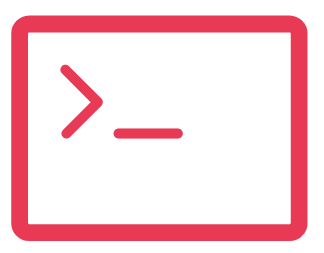Step through the door of simplified project development and advanced teamwork in one airspace. Experiencing a breakdown of integration at Tenetizer Technologies, we fully perceive the vital role of which continuity holds a project success. The next step is to dive into our comprehensive guide on how to integrate GitHub with Salesforce, thus making your job of a smooth and efficient workflow even smoother.
Salesforce is an all-purpose Customer Relationship Management (CRM) system that manages sales, marketing and interaction come occurring between customers and a company with one button. Its advantage is to streamline the sales, service, and marketing activities, making it possible to manage the prospect, lead, account, and contact easily.
The combination of Salesforce and GitHub provides your project with the possibility to use version control and at the same time creates a collaborative environment. These days, ensure that your repository is confined and secure to protect the privacy of the delicate information.
Advantages bestowed upon enterprises and development teams through the fusion of GitHub and Salesforce:
Enhanced Collaboration and Version Control:
Utilize the excellent GitHub branch management features like tracking and version control for easy branch ( advances) with colleagues.
Provide that code exchange and collaborative Salesforce project effort, the faster and more effective accomplishments are therefore possible.
Continuous Integration and Automated Deployment:
Use the power of Jenkins or CircleCI to build an automated deployment pipeline that is integrated with GitHub and can be used to deploy Salesforce seamlessly.
Automate automated code modification testing, deployment, and validation within Salesforce environments, guaranteeing that the IT coherence happens to be always in effect.
Code Evaluation and Quality Assurance:
Utilize GitHub code review module to seek comments from and if possible, resolve bugs in the project code before proceeding with development.
Establish and enforce coding standards and best practices to enhance the quality and security of the code.
Augmented Security:
Have fine-grained rule of access control by using GitHub, selecting the people or teams that will have access to important code and networks the same as organizational requirements.
Enhance internal controls and maintain thorough audit trail, therefore ensuring compliance and falsify security protocols.
Knowledge Management and Information Exchange:
Golfer the wiki and README files of GitHub as well as the documentation of your Salesforce project to identify the knowledge within your team.
Guide the team to mobilize prowess, positing hues and glitches, therefore stimulating creativity and solution derivation.
Open Source and Community Engagement:
Tap into GitHub’s platform for the promotion of collaboration on open-source Salesforce projects thereby creating a strong community and knowledge pearl.
Interact with other developers,make use of their expertise and join the Salesforce development community actively.
Keep in mind that the meticulousness of the setup together with the fashioning of best practices are unfailingly required for a fruitful and successful integration process. If you need our help at this level or want to know more details, we are always ready to assist you with a click at www.tenetizer.com.
A certainty, here are the steps that you should follow in order to set up Salesforce GitHub Actions:
Step 1: GitHub Account Setup and Access:
Kickstart the process by accessing your GitHub account:
Login into your GitHub account to open repository which stringently manages your access.
Step 2: Configuration:
Ensure seamless access to your GitHub repository with these straightforward steps:
Git is a software that you need to have on your computer to access and manage the repository.
Copy your GitHub repository to your local environment to build in speed and own your own actions.
Step 3: Salesforce Metadata Acquisition.
Empower your project’s evolution with essential Salesforce metadata files:
Access project-specific metadata files from Salesforce, embedding the code components, configurations, and modifications.
Step 4: Configuring Git Repository
Forge a symbiotic relationship between Salesforce’s informational essence and your Git repository:
Synchronize Salesforce files with Git repository keeping the related files in the same location.
Ensure that your Git repository is always up to date with the latest Salesforce changes, which will allow you to have a well-defined iterative development cycle.
Step 5: The repo has already been configured with all the necessary components.
Elevate your workflow with the implementation of GitHub Actions:
Create a .gitignore file inside the repository directory . you’ll find github/workflows to be a good place to put your workflow configurations.
Tap on mixing into this folder YAML files to display clearly the steps of your CI/CD and abet smooth development and deployment.
Get GitHub Actions fixed to develop collaboration, check deployment history, and implement the uniform change management in your team.
For optimal efficacy, adhere to best practices while configuring GitHub Actions for Salesforce:
Embrace Modular Workflows:
Divide your workflows into the different stages, each with a specific objective, so that you will see clearly and operate in a smooth way.
Employ identical activities (in place of repetition) which will help to move towards formulation of approaches by reducing the redundancy in development process.
Prioritize Secrets Management:
Use GitHub secrets to guard secrets like API keys and Salesforce credential which are used in the application.
The integrity of these secrets by the workflows them work with only to enhance security without affecting operational efficiency.
Maximize Environmental Variables:
Define the environment variables for different Salesforce orgs and tailor the workflows to the particular organizational needs of each of these orgs.
Capitalize on these parameters by flexibly making workflows depending not only on the configuration but also the scale.
Optimize Matrix Builds:
Matrix building harnesses have to be rigged to see various Salesforce systems and versions. It is designed to provide a wide coverage and compatibility of matrixes.
Try out different mixes, and check their compatibility in various settings and arrangements.
Leverage Parallelism:
As there is a growing trend toward organizational automation with the use of artificial intelligence and machine learning, it will also be immensely important to apply modern technologies like parallel computing to help speed up processes, boost efficiency, and achieve higher throughput.
Parallel testing within different orgs and branches expedites feedback to help refine development and improve agility.
Champion Artifact Publishing:
After the successful build or test, publicize the artifacts and so that the future deployment steps can use these artifacts seamlessly.
Make it possible to have no impedance while transitioning from development => testing, and deployment. And hence ensure teamwork and efficiency.
Empower Conditional Steps:
Event type or branch name based configure actions to accommodate emerging needs and new situations.
The context of the given information is used to distinguish between the different deployment strategies, and the deployment efficiency is optimized without compromising on the reliability.
Prioritize Alerts and Notifications:
Set alerts for workflow failures so if any incidents occur; they can be resolved immediately, thus reducing time of outage.
Make use of emails, Slack, or other communication avenues for notifications and this way create problem anticipation system with timely fixing of issues.
Champion Testing Methodologies:
Use a deep testing mechanism in your workflows. This will make sure that everything is quality, functional, and performant.
Provide for rigorous code examination and approval, giving room to maintaining and improving code quality which in turn boosts customers’ experience.
Document Diligently:
Keep a thorough record of your work including the goal, the inputs and the outputs so that it is transparent and reproducible.
Provide your team members with essential insights and directions which in turn would help them to cope effectively with onboarding and knowledge dissemination process.
In Conclusion,
Utilize the smooth use of both Salesforce and GitHub together to up your game with your development activities. At Tenetizer Technologies, we are determined to assist businesses to gain the tools and information that they need to be successful in the fast-changing world. Find out how Salesforce and GitHub connections revolutionize the work of your company and reveal so many new ways of cooperation and creativity. Whether you are on board with a new project or want to use the modernized workflows this expedient guide has all the tools for you to succeed.
Ready to start your integration process? Do contact us through form below.

